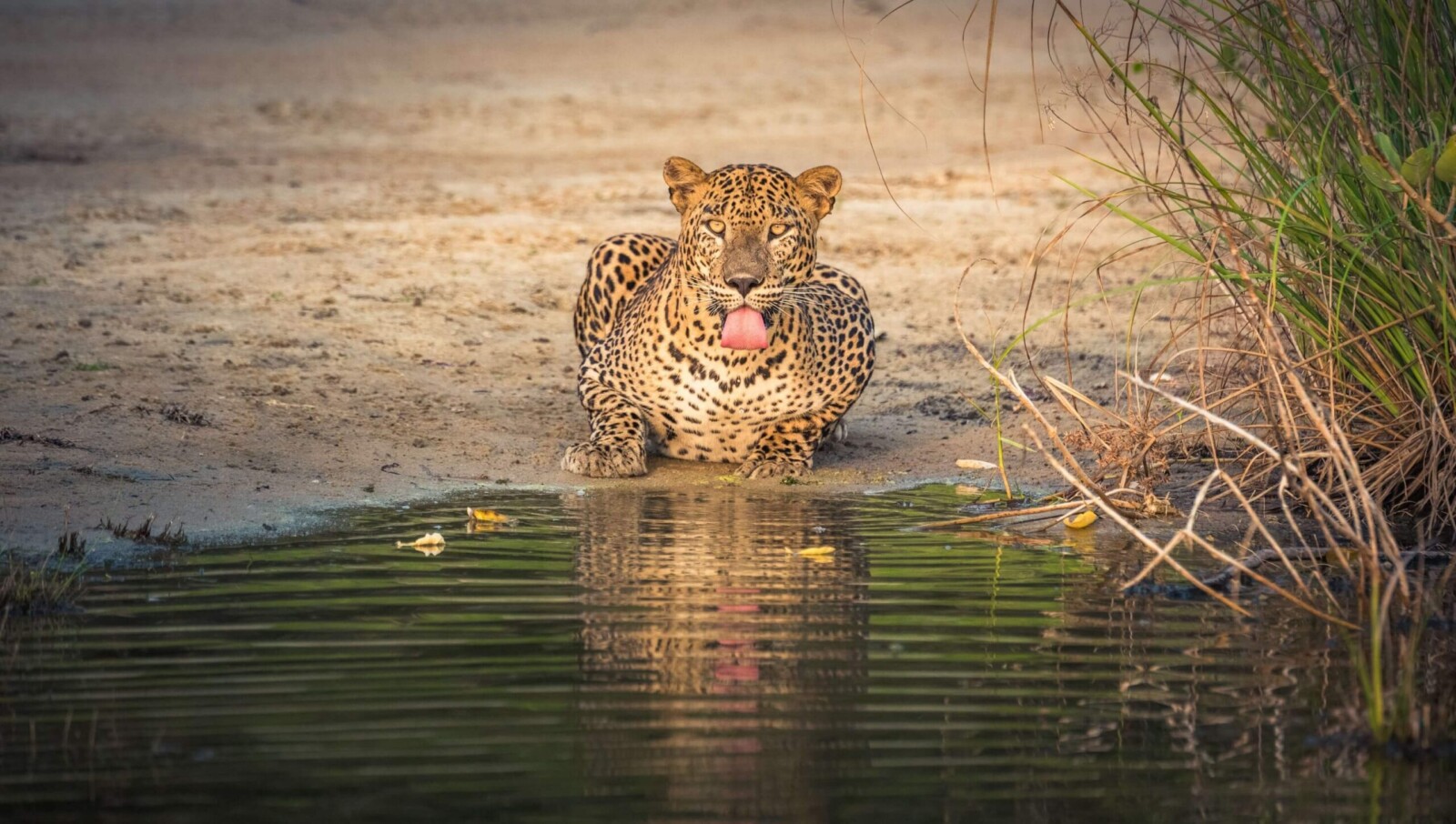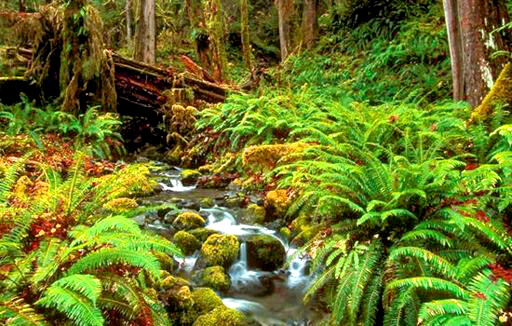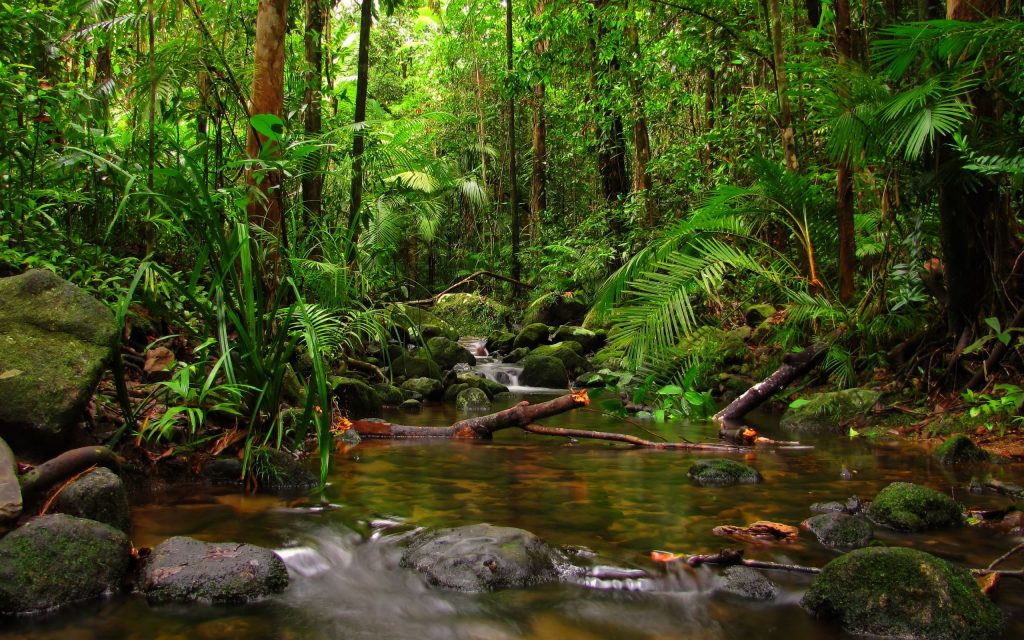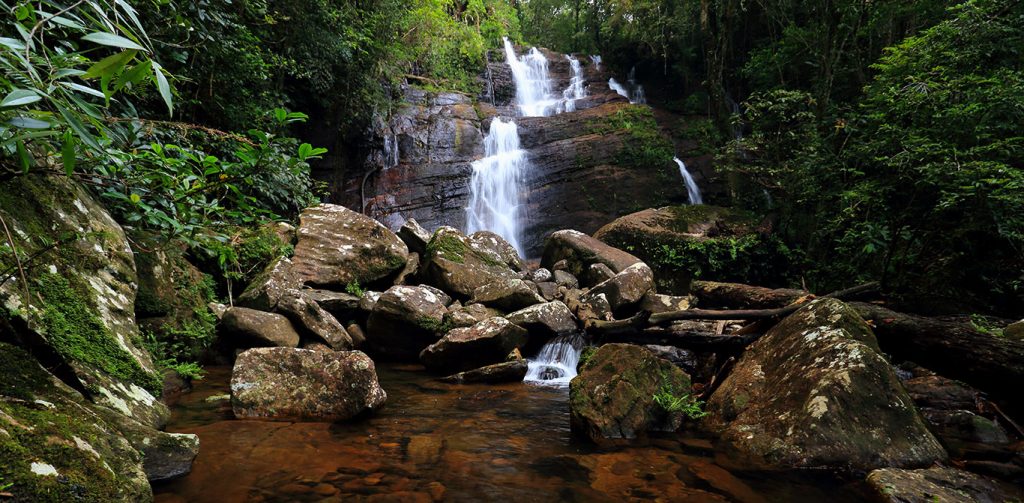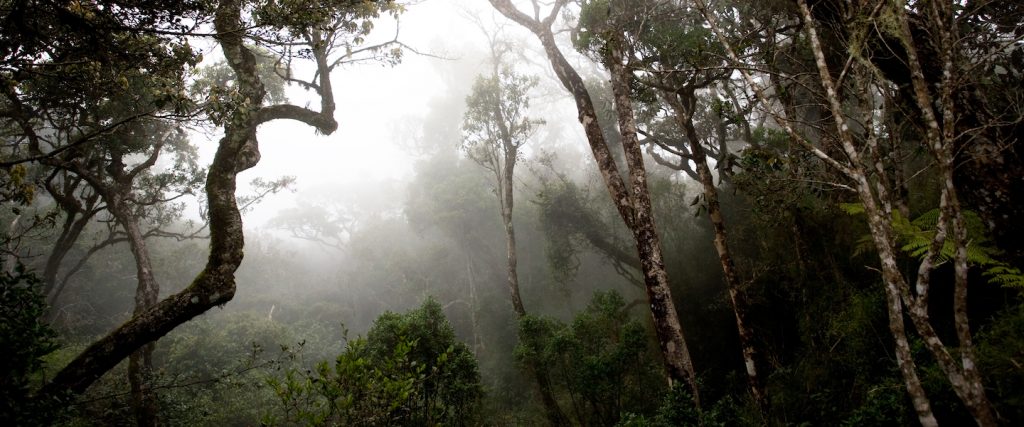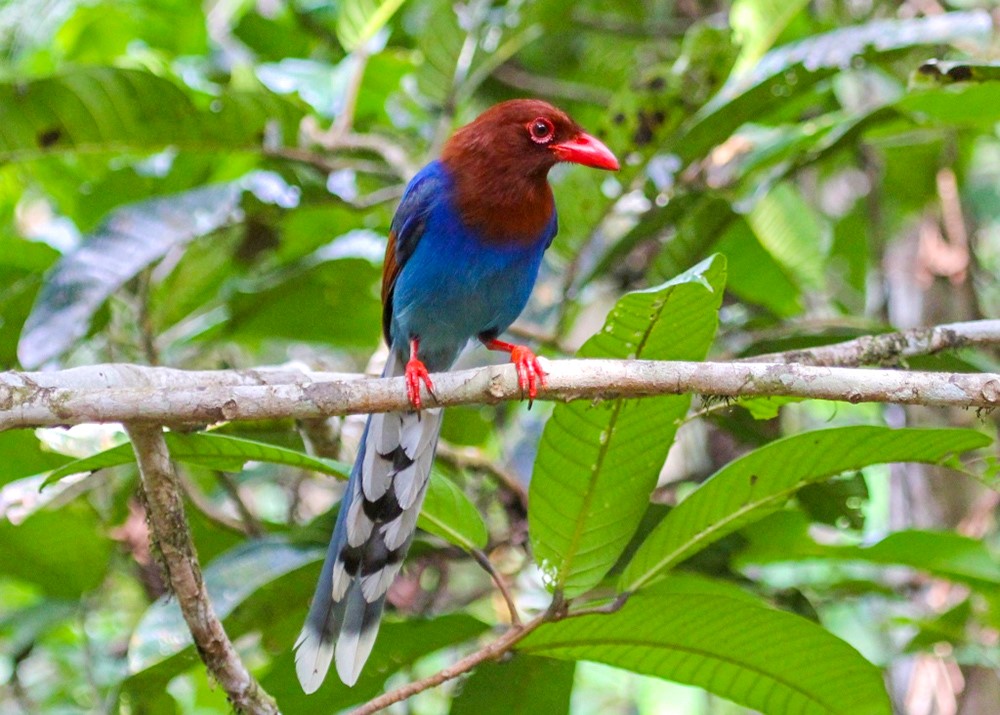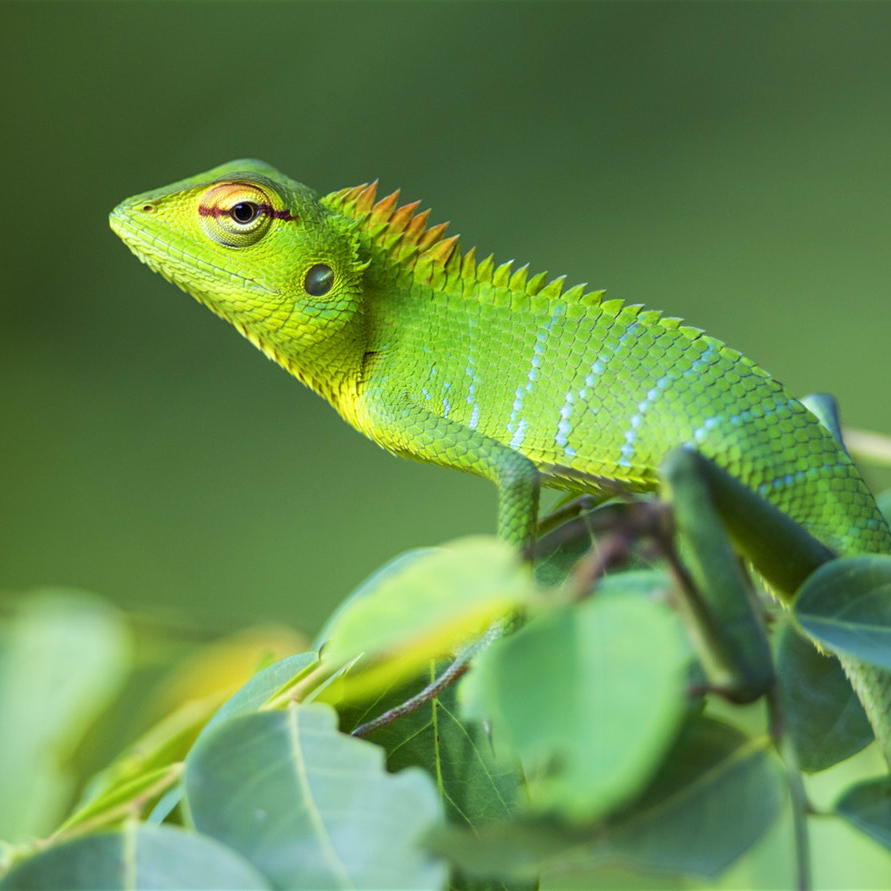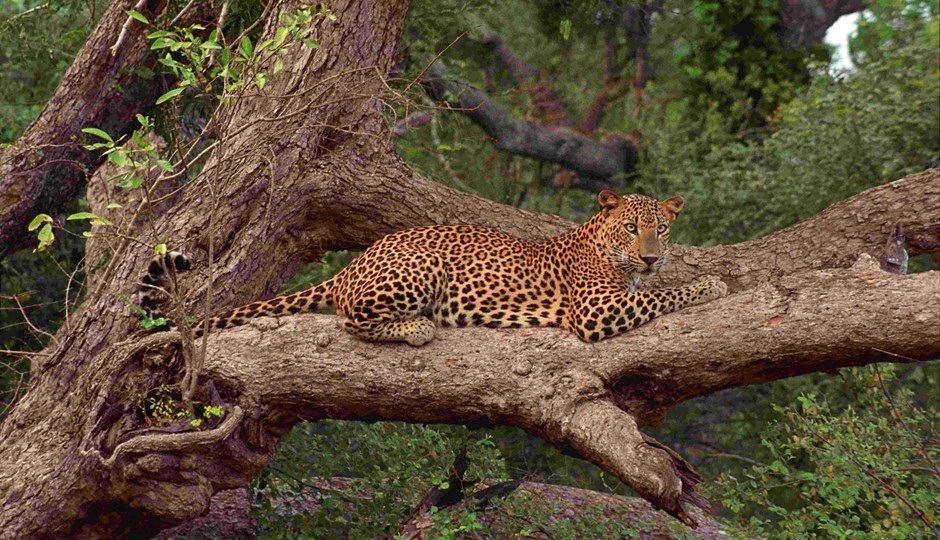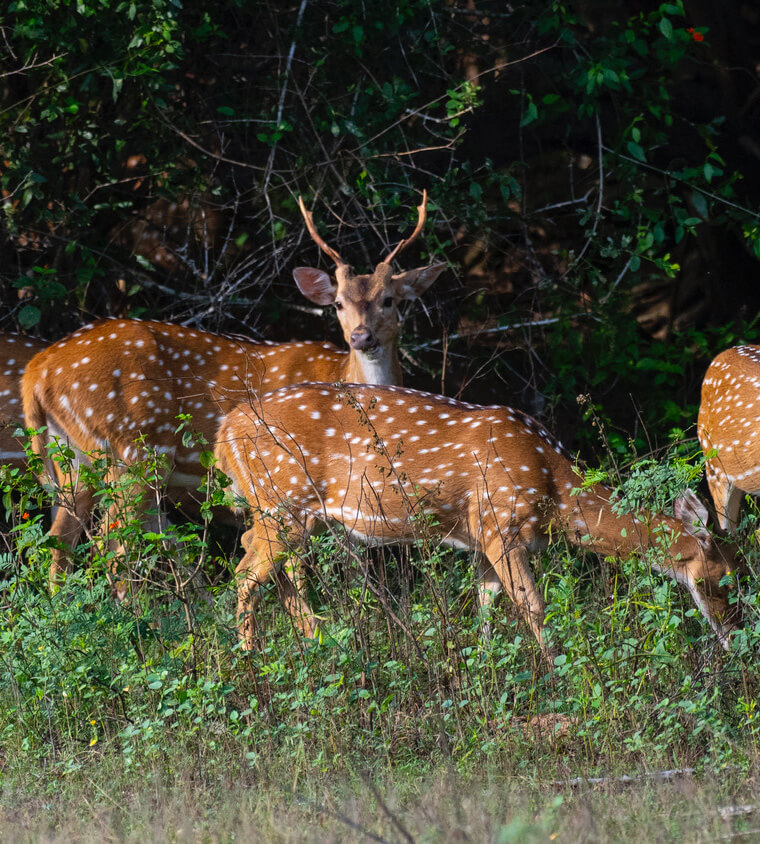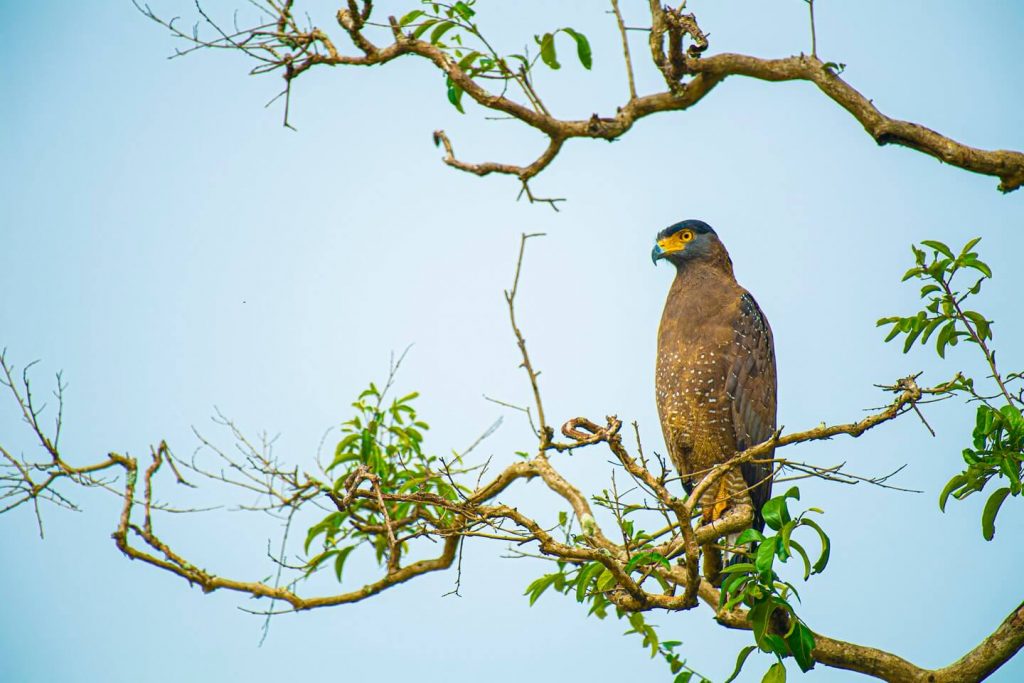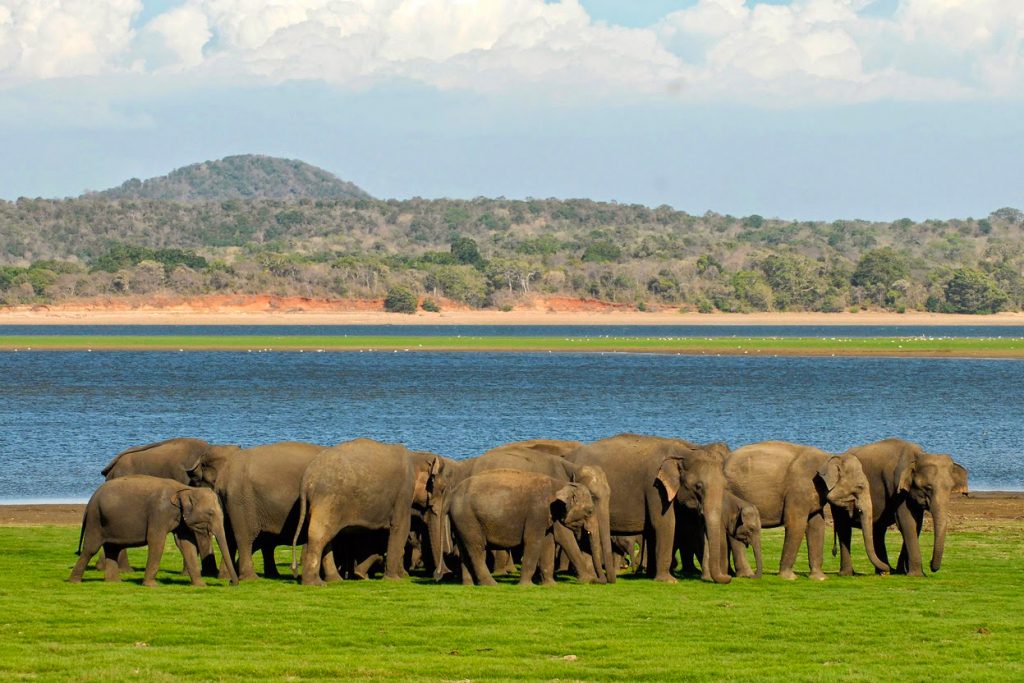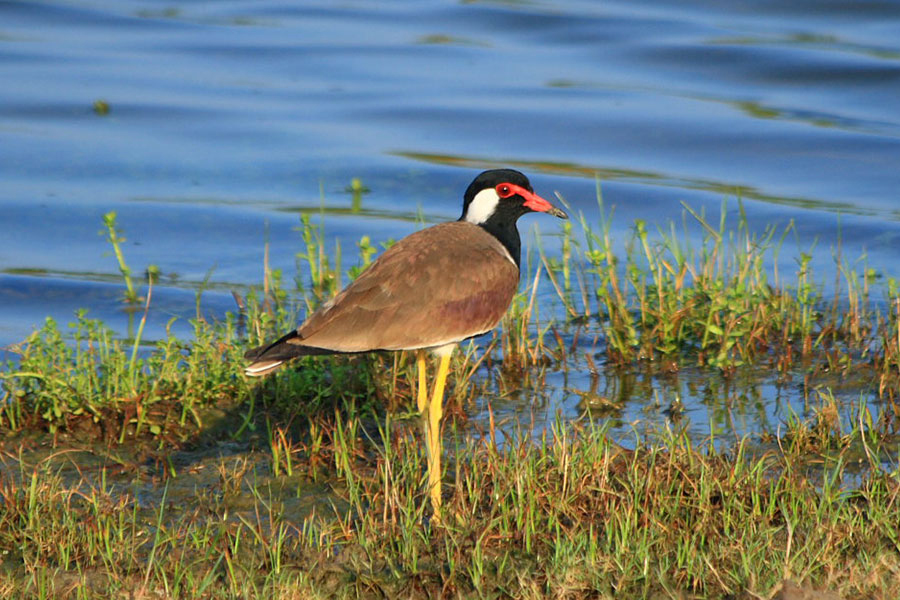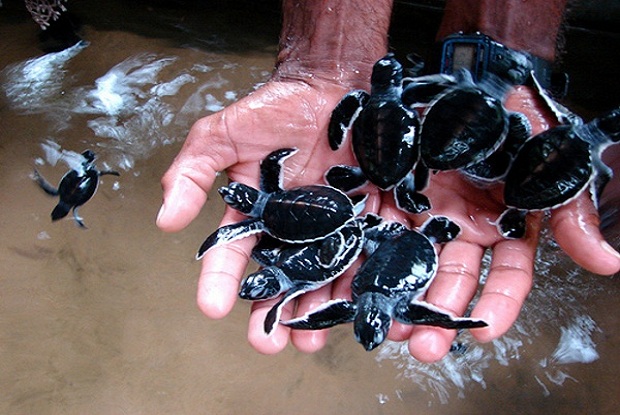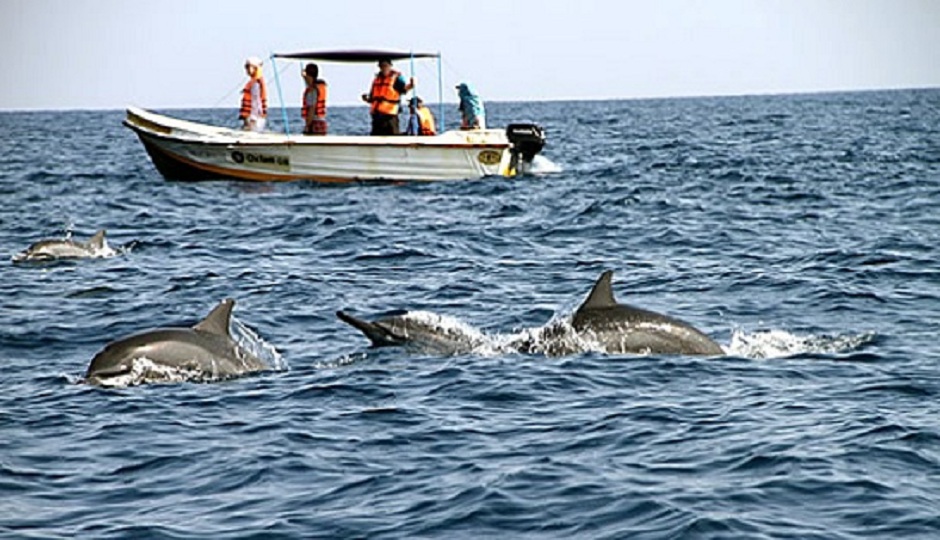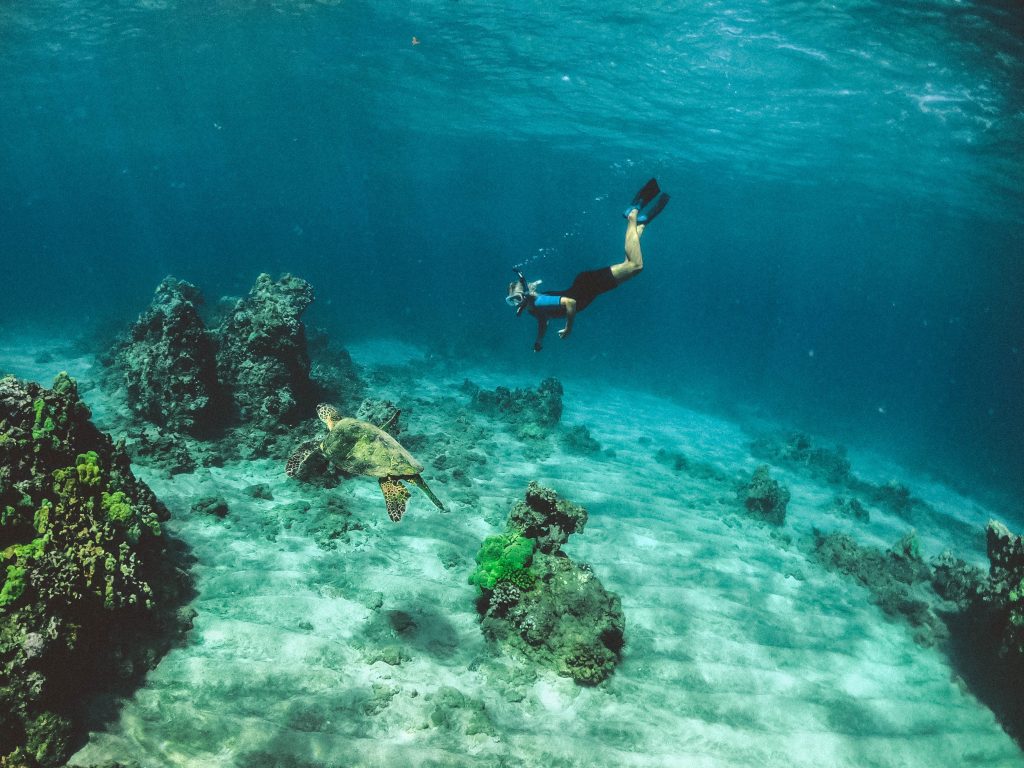During the 1800s, Sri Lanka had an abundance of wildlife. At the time, villagers and British folk would hunt animals like the sambar, deer, buffalo, wild boar and so on for consumption purposes. The Sri Lanka government then found out and took certain measures to prevent the animal population from reducing. The strategy was to create national parks, nature reserves and sanctuaries that cover all ecological and climatic regions of Sri Lanka. Today, 13% of the nations land area is protected for preserving its flora and fauna.
Introduction to Sri Lanka’s nature and wildlife
Sri Lanka boasts a massive variety of flora and fauna:
- 4000 species of flowering plants
- 107 species of freshwater fish
- 59 species of amphibians
- 174 species of reptiles
- 435 species of birds
- 140 species of mammals
In all of Asia, Sri Lanka is said to have the highest density for species of flowering plants, amphibians, reptiles and mammals.
Before we go on to explain the variety of species you will see in Sri Lanka, let us define a few important terms that you must know.
- Species are either introduced or indigenous.
- Indigenous species are only native to one area.
- If a species is found only in one particular country, it is known as endemic species.
- Ecosystems are of two kinds: aquatic and terrestrial. These can be either natural or man-made.
- Geographical areas that carry a high number of endemic species are referred to as biodiversity hotspots.
Sri Lanka is home to a large number of endemic species – which cannot be seen anywhere else in the world.
From the above figures of species variety in our country, the following percentages are endemic to the island:
- Flowering plants – 28%
- Fish – 41%
- Amphibians – 65%
- Reptiles – 52%
- Birds – 10%
- Mammals – 5%
- Land Snails – 80%
- Freshwater crabs – 100%
Sri Lanka’s Biodiversity in brief
Sri Lanka, along with Western parts of India are heavily rich in biodiversity and are categorized as one of 25 biodiversity hotspots in the world. Explained below are the ecosystems that make Sri Lanka a biodiversity hotspot.
| Natural aquatic ecosystems | Man-made aquatic ecosystems | Natural terrestrial ecosystems | Man-made terrestrial ecosystems |
| Marshes | Tanks | Tropical wet evergreen forests | Home gardens |
| Streams | Reservoirs | Tropical submontane forests | Agriculture fields |
| Rivers | Canals | Tropical montane forests | Botanical gardens |
| Estuaries | Ponds | Mixed evergreen forests | Monocultures |
| Lagoons | Lakes | Grasslands | Mixed plantations |
| Coastal Seas | Scrub forests | ||
| Sea Grass Beds | Savannah | ||
| Mangroves | Sand dunes | ||
| Coral Reefs | Beaches | ||
| Sandstone reefs |
Must See Nature and Wildlife Destinations in Sri Lanka
Forest Reserves
Sinharaja Rainforest Reserve
With international significance, this UNESCO recognized World Heritage site is located in the Sabaragamuwa (south west) province of Sri Lanka. The Sinharaja Rainforest Reserve is the last remnant of Sri Lanka’s tropical lowland forest, with over 60% endemic trees, 21 endemic bird species, and a few rare insects, reptiles and amphibians. Surrounded by rivers on three sides and a tea estate on the 4th, the total area of this Reserve spans out to about 18900 acres.
Popular for its bird life, 19 of the 20 endemic bird species of the country are found at Sinharaja Forest Reserve. Wood Pigeon, White-headed Starling, Red-faced Malkoha, Green-Billed Coucal, Blue Magpie and Spur Fowl are just some of these endangered birds that are candy to the eyes for bird lovers who visit Sri Lanka. Out of the 12 endemic mammal species in Sri Lanka, 8 are found here, some of them known as giant squirrel, badger mongoose, torque macaque, and the purple-faced leaf monkey.
There are two main nature trails that can be enjoyed by visitors to the Sinharaja Rainforest Reserve, both being equally exciting and enlightening. You will have to make your way through a dense forest with tall trees and streams of clear water that is home to a variety of fish. The much spoken about bird species are seen in the canopies of the woods.
National Parks
Udawalawe National Park
As the 6th largest animal sanctuary in Sri Lanka, the Udawalawe National Park is widely known for its large elephants and bird population. Located in the borders of Uva and Sabaragamuwa provinces, the park is about 170kms from Colombo, about a 4-hour drive. Marshes, grasslands and bush forests are the ecosystems you will come across while you drive around in your jeep safari spotting wild elephants. The purpose of the creation of the park was to give a home to wild animals that were displaced by the construction of the Udawalawe Reservoir. So, anytime of the year, if you want to see elephants of the wild and their families in their natural habitat, Udawalawe National Park is the right place to be!
Yala National Park
Sri Lanka’s second largest, yet most famous, Yala National Park borders the Indian Ocean and is located in the south east of Sri Lanka. The park is divided into five blocks, out of which only two are open to the public, in an aim to preserve the natural habitat. Elephants, crocodiles, deer, monkeys, buffaloes, sloth bears, birds, and of course, the much sought-after leopards are some of the wild animals that are seen on a game drive at the Yala National Park. It is believed that there are about 40-50 leopards residing here but the chances of a sighting depends on your luck as leopards are very shy and can easily be camouflaged within the grassy plains.
Tissamaharama is the city you should be targeting to include at least one or two nights in your Sri Lanka holiday itinerary if you want to cover Yala, as this is the easiest route to enter the park. Jeep safaris are possible at either 6am or 2pm and the total duration of a game drive is about 3-4 hours. The Park is closed every September for maintenance so you might want to keep that in mind when planning your vacation package.
Kumana National Park
Also located in the south-east of Sri Lanka is the Kumana National Park, a popular eco-tourism attraction and is an important nesting and breeding ground for Sri Lankan and migratory birds. The extensive bird life survives on massive natural mangrove swamps and other tanks and lagoons that are scattered across the park. Of the 400 recorded bird species in Sri Lanka, 255 of these can be found in the Kumana Bird Sanctuary. During your visit, you are bound to see large flocks of the migratory Water fowl and Water birds. The Eurasian spoonbills, Lesser adjunt, Black-necked stork and Great thick knee are just a few breeding inhabitants here. Pintail snipes migrating from as far as Siberia, along with several other Asian birds and a few rare species such as Yellow-footed green pigeon and red-faced Malkoha are some more gorgeous candy for bird lovers visiting Kumana. There is also an animal population to explore such as the elephants, European Otter, Fishing cat, Wild boar, and Golden Jackal.
Minneriya National Park
Want to witness the largest known wild Asian elephant gathering in one place? Minneriya National Park should be on your must-visit nature and wildlife destinations in Sri Lanka. Located in the North Central Province, the heart of the cultural triangle of Sri Lanka, Minneriya National Park is easily accessible from destinations such as Sigiriya, Dambulla, Habarana, Polonnaruwa and Anuradhapura. One of the highlights of this National Park is a 249 square km reservoir built by an ancient King of Sri Lanka about 15 centuries ago. During the dry months of August to October, visitors can witness a gathering of about 200 wild Sri Lankan elephants on the shores of the reservoir, accompanied by beautiful bird varieties such as painted storks, large pelican and herons. The Park also has plenty of scrub, forest and wetlands that provide shelter to other animals such as deer, buffalo, sambar, crocodiles, toque macaques and very rarely, leopards.
Galoya National Park
One of Sri Lanka’s most untouched National Parks is the Gal Oya National Park, established in 1954 and serves as the catchment area for the largest reservoir in Sri Lanka. Located about 375kms northeast of Colombo, a 5–6-hour drive is required to reach this hidden gem. Along with a diverse terrain of lakes and jungle forest, nature lovers are sure to enjoy the striking mountain backdrop, encounters with elephants, sloth bear, water buffalo, leopard, and a wide variety of birds such as herons, eagles, storks, egrets and oriole. This unique National Park in Sri Lanka is the opportunity to enjoy a boat safari that offers a spectacular sight of elephants swimming in herds, and also a visit to “Bird Island” – an island on the reservoir swarming with birds. Offering one-of-a-kind experiences with wildlife and nature, Gal Oya National Park should most definitely be on your travel itinerary in Sri Lanka!
Horton Plains National Park
Horton Plains National Park is the largest plain in the central hills of Sri Lanka, and is also the coldest and windiest location in the country. If you are studying ecosystems and biodiversity, Horton Plains is a great place to be. Along your trail, you will come across montane evergreen forests, grasslands, marshy lands and aquatic ecosystems as well. Home to a lot of endemic birds and wildlife, this National Park in Sri Lanka is a must-visit if you’ve got a few days in Nuwara Eliya on your itinerary.
On the southern edge of the Horton Plains, at a height of about 2100m above sea level, you will come to a cliff edge with a stunning 900m drop. This point is popularly known as “World’s End” because of the panoramic and distant views that can be seen here.
An extension from the Horton Plains nature trail is a visit to the nearby Baker’s Falls – one of the finest waterfalls in Sri Lanka. After a fair deal of steep slopes, the breathtaking waterfall view makes the trek worthwhile indeed!
Bundala National Park
Migratory water birds from across the world trying to escape the harsh winters consider Bundala National Park an important breeding ground. Out of 197 bird species found here, 100 are water birds, 58 are migratory; the greatest attraction being the flamingos that migrate in large flocks. Close to the city of Hambantota in southern Sri Lanka, the park is about 250kms from Colombo. During your wildlife and nature excursion at Bundala, you will encounter the Painted Stork, Terns, Black Headed Ibis, Black Tailed Godwit and many more bird varieties along with mammals, amphibians, reptiles and butterfly species.
Marine Bio-Diversity in Sri Lanka
Whale watching
While Sri Lanka may not be as famous as the Antarctic for its beautiful blue whales, Sri Lanka rightfully claims enjoyable whale watching experiences on one day while also being able to explore leopards and elephants of the wild the next day. Mirissa in the south, Kalpitiya in the west and Trincomalee in the east are popular whale watching destinations in Sri Lanka.
For a whale watching experience, you should ideally be aboard the boat arranged by your tour operator by sunrise – around 6am. Small boats manage a group of about 8 people while larger boats can take 50 people. The whole experience is about 3-4 hours in the water, during which you will most likely see the blue whale, sperm whale and possibly the Humpback whale.
Best time to visit:
- Mirissa – December to April
- Kalpitiya – November to March/April
- Trincomalee – March/April to August/September
Turtle hatcheries
Along the southern coast of Sri Lanka, popular destinations such as Kosgoda, Galle, Hikkaduwa, and Bentota are where most of the 18 turtle hatcheries are located in Sri Lanka. doing a great job at preserving sea turtles, these hatcheries are worth a visit during your southern coast tour in Sri Lanka. November to May is a good time to go if you want to see baby turtles hatch. You could volunteer with a turtle conservation project to increase your chances of being there at the exact moment that the turtle egg hatches. Nevertheless, a visit to the hatchery lets you get an up-close-and-personal encounter with sea turtles such as Leatherbacks, Green Turtles, Loggerheads, Hawksbills and Olive Ridley Turtles.
Coral reefs, snorkeling and aquatic life
Sri Lanka’s corals are rich in biodiversity and are spread throughout the island. Hard coral species are in abundance, with over 180 species recorded. Several diving locations are known for colorful coral reefs, tropical fish and more marine species swimming around ship wrecks!
Sri Lanka has an abundance of coral reefs around most parts of the island. They are rich in biodiversity with over 180 hard coral species recorded. The colorful coral reefs with tropical fish and other marine species, and ship wrecks with spectacular artificial reefs can be explored at several diving and snorkelling locations around the island.
The various coral and rock formations are uniquely beautiful for diving enthusiasts to explore. Snorkeling expeditions are also available to marvel at the beauty of Sri Lanka’s marine life from shallow waters.
In Sri Lanka, instead of barrier reefs, we have coral reefs that are often considered offshore reefs and near-shore reefs. Self-styled barrier reefs that are parallel, yet far from the shore and form a broad reef lagoon are seen in the south of Mannar in the northern province of Sri Lanka. The Bar Reef in Kalpitiya is the largest seen patchy coral reef in Sri Lanka. from Vankalai to Kalpitiya peninsular, a number of true coral patchy reefs are seen offering a variety of reef access in terms of snorkeling in shallow waters and scuba diving in deeper seas.
Patchy reefs are also seen along the western and eastern coasts just about 15-20km from shore at a depth of about 20m. Trincomalee and Passikudah are the best places for exploring coral reefs along the eastern seaboard. Along the southern coast, Hikkaduwa, Unawatuna, Rumassala and Matara have fringing reefs along the coat. Little Basses and Great Basses located off the south coast are known to have the best barrier like reefs in all of Sri Lanka.
Conclusion
What is great about Sri Lanka, its wide landscape varieties, its tropical weather and rich biodiversity is that any time of the year you plan a visit, you are guaranteed to be able to enjoy visits to National Parks, beaches, and partake in whale watching activities in at least some part of the island.

